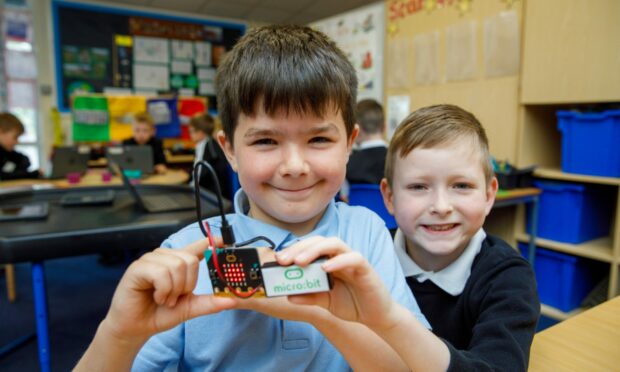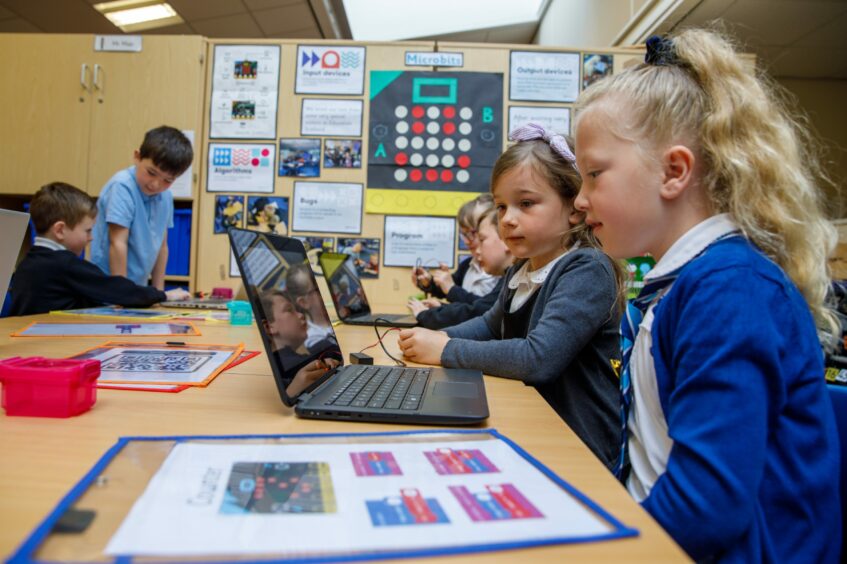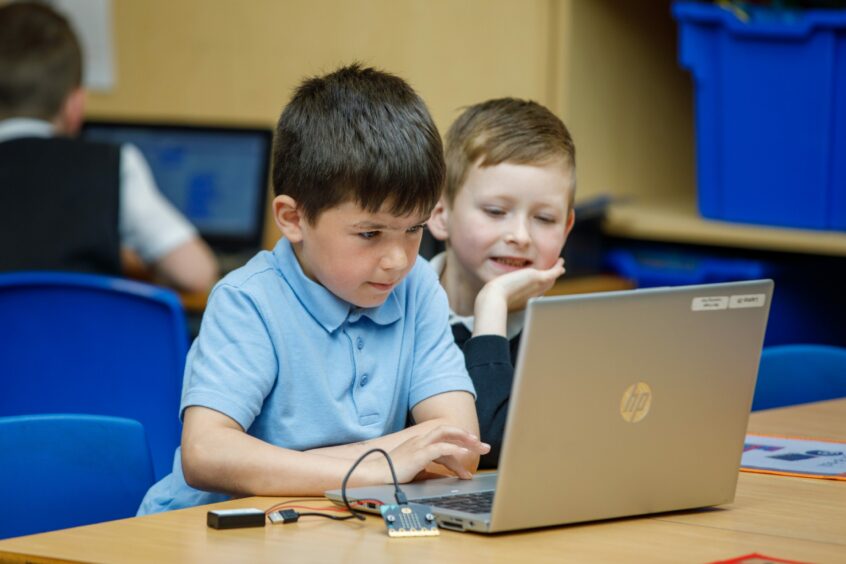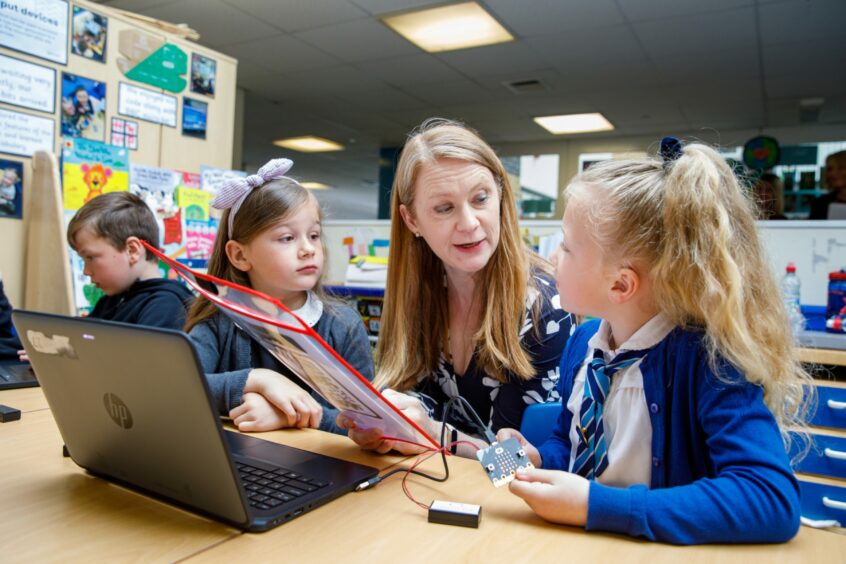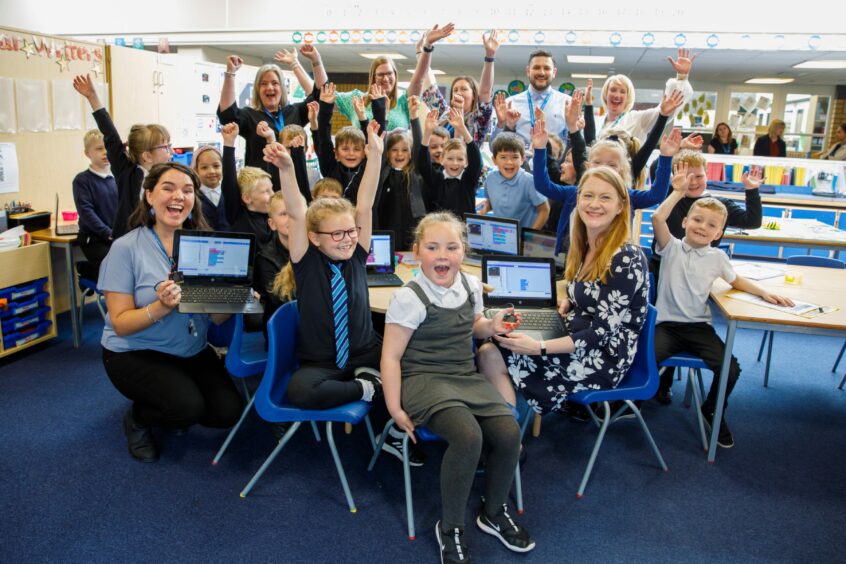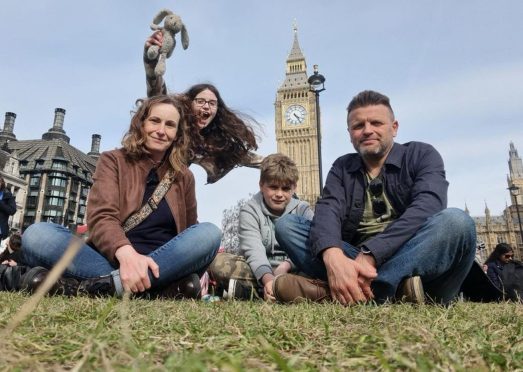For most people, computer coding may be synonymous with tech billionaires like Mark Zuckerberg or Bill Gates.
But what connects computer programming with youngsters in the coastal Fife town of Methil?
Pupils at local school Methilhill Primary have been among the first in Scotland to get their hands on special micro:bit coding devices – equipment which offers an entry into coding and computing science.
Stemming from Scottish Government investment aimed at improving computing science in schools, the initiative will see every primary school get their hands on twenty of these devices for pupils to use.
Watch the Methilhill Primary pupils show off their coding skills:
‘The world is their oyster’
It’s hoped that introducing pupils to coding at an early age will lead to pupils gaining the interest and skills which will eventually open up career opportunities.
Alix Rolland, deputy head teacher at Methilhill Primary said: “We are all about early intervention and we have chosen to target two of our younger classes with the thought behind that being that if we have all this input originally then it will pay dividends.
“Another thing it does is open up possibilities. This is a possible job for them to do at some point, the world is their oyster is the slogan we are going with here.”
And with the world becoming more and more digitalised, subjects like coding are more important than ever.
Ms Rolland added: “If we look at the world around us right now, it’s something we must do rather than something we should or could.
“We are really striving to become a digital school and this is a major part of that.”
Simplicity is key
Research from The Micro:bit Educational Foundation – which delivers the devices – found that 61% of primary school teachers in the UK responsible for teaching computing have no background in the subject.
However as Kieran Mair, P2/3 class teacher at Methilhill Primary, explains the micro:bits initiative has proven to be simple to get to grips with.
He said: “In terms of the micro:bits themselves, it’s taken a little bit of time to get it up and running but the training has been great. It’s really easy and accessible.
“We’re at the very beginning of our journey and I’m already seeing a lot of skills like problem solving and resilience that the children are dipping into from using the Micro:bit.
“It’s already transferring themselves to other subject areas like literacy and writing, so when they are trying something and maybe not getting it right first time they are using those skills they have developed.”
‘It’s an exciting prospect’
Helping launch the initiative at Methilhill Primary, Education Secretary Shirley-Anne Somerville said: “It has been inspiring to see first-hand how these devices can help to get children thinking creatively and to be enthused about technology.
“It’s an exciting prospect to imagine these scenes being replicated in schools all over Scotland in the coming weeks and months, and we’re proud to be leading the world in creating quality engagement in computing sciences among our young learners.”
Bringing Classics back to state schools wins Monifieth teacher a prestigious prize
